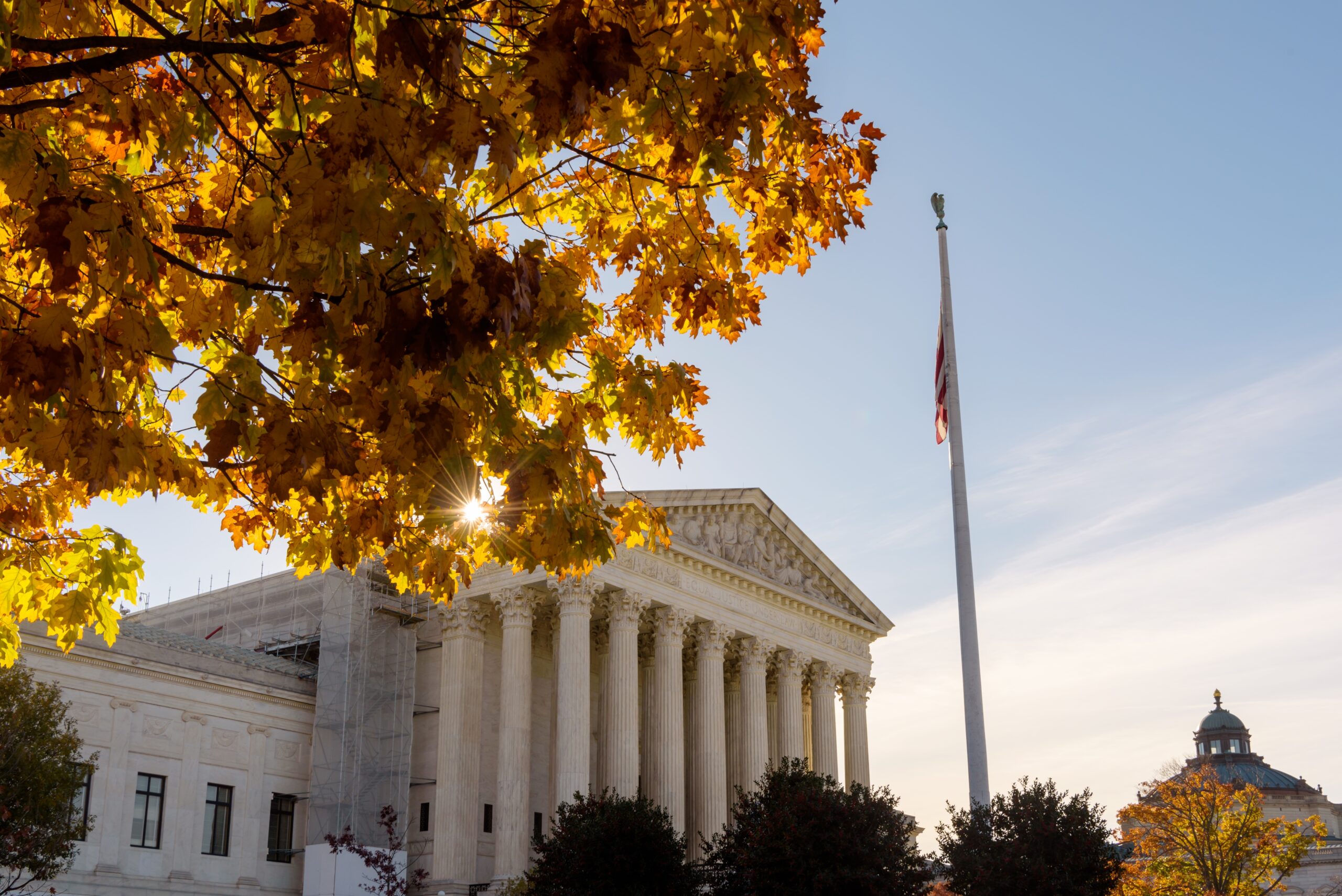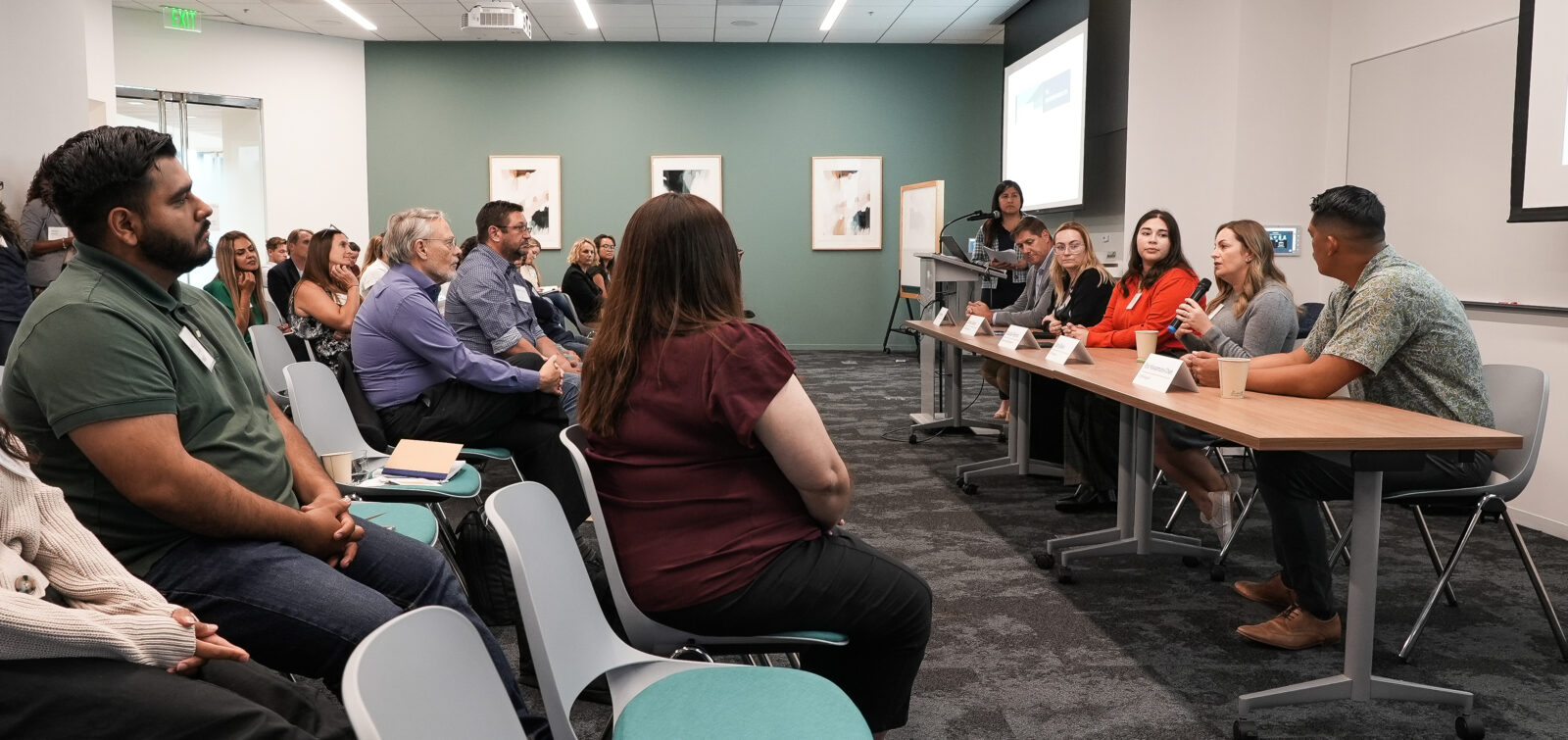The following is an article from Environmental Business Journal (EBJ). EBJ Interviewed ESA’s Federal Strategy Director, Eric Beightel on the changing policy landscape.
Click here to read a PDF version of the below interview.
Environmental Business Journal, Volume 38 Numbers 1/2: Q1 2025
EBJ Awards 2024 & 2025 Executive Review
ESA’s New Federal Strategy Director Expects Unprecedented Challenges; Sees Potential in Industry Collaboration
Environmental Science Associates (ESA) is a prominent environmental services firm, leading the industry in planning and design, environmental science, regulatory compliance, and restoration. ESA works to improve the sustainability and resilience of communities and the natural environment, providing responsive client service and tackling complex environmental challenges. A 100% employee-owned firm, growing thoughtfully and deliberately, ESA invests in its employee-owners across offices in California, the Pacific Northwest, and the Southeastern United States.

Eric Beightel recently joined Environmental Science Associates as Federal Strategy Director. In this position he will advise clients nationally on regulatory challenges, helping them understand ever-evolving federal processes, policies, and funding requirements. Beightel comes to ESA after serving as the Presidentially appointed Executive Director of the Federal Permitting Improvement Steering Council (Permitting Council). At the Permitting Council, Beightel was responsible for overseeing a portfolio of more than $75 billion in large-scale infrastructure projects, supporting federal agencies and project sponsors through expedited federal environmental review and permitting that advanced dozens of critical projects to completion, realizing their economic and environmental benefits for the nation.
EBJ: Congratulations on the new appointment. Some would say it’s a good time to get away from being steeped in the beltway, but presumably your position with ESA means you have to remain pretty connected, so where do you expect to spend your time over the next four years?
Eric Beightel: My family moved out of the DC area in 2022 and not long after I was contacted about the Permitting Council position. I often think of the Al Pacino line in Godfather III – “just when I thought I was out, they pull me back in.”
I’ve spent the majority of the last 20 years focused on federal infrastructure and environmental policy because it’s my passion. The Trump Administration is actively working to reimagine government in ways that many are unprepared for and that will lead to questions around project planning, permitting strategy, and how to comply with a very dynamic policy landscape. Fortunately, ESA recognizes the need to monitor, assess, and interpret these changes in a way that provides our team of technical experts and our clients with actionable advice to help their projects succeed.
EBJ: With the incoming Trump Administration some observers would say that market driver emphasis will increasingly devolve to state and local policy, regulations, enforcement and funding. Do you agree with that, or do you think the changing of market drivers for environmental consulting & engineering firms varies that much depending on the administration in Washington, and the leadership at various departments?
Beightel: If you’d asked me that question before inauguration, I think my answer would be very different than it is today. Typically, the change in administration brings a change in policy priorities, but the nuts and bolts of the federal environmental review and permitting apparatus remain intact. I’m not so confident about that anymore. The efforts underway to deconstruct the administrative state will create unprecedented and unexpected challenges. With regards to certain environmental policies that we’ve taken for granted like assessing a project’s contributions to climate change and considering how a project may affect disadvantaged or historically underserved communities, states and cities will have to carry that torch. Considering how drastic some of these changes are from the Administration, you have to expect the market to respond.
EBJ: Reflecting from your positions of the past and particularly with the Permitting Council most recently, how do you see the implementation of the Bipartisan Infrastructure Law in the rear view mirror as to how it’s initial implementation rolled out; What were the major obstacles from a funding, personnel, contractor or other issues; and approximately what stage are we at in the cycle of the program from launch to completion in spending in percentage terms, and if any of the intended BIL allocations may be canceled or redirected by the new administration?
Beightel: At the last tally, the BIL had supported 72,000 projects and was on track to repair over 365,000 miles of highway and over 20,800 bridges. It took a minute to get rolling – many of the funding programs authorized by the BIL were new and the sheer volume of funding available made it a challenge to effectively and responsibly roll out the funding through the various grant programs. Capacity at the agencies was a bottleneck to administer the grant programs but also to process the environmental documents and permitting.
We recognized this challenge and took concrete steps to help increase capacity at the agencies – and coupled with the nearly $1 billion appropriated through the Inflation Reduction Act, agencies did effectively staff up, enabling the projects to move at-pace. We are now three years into a four-year bill and Americans are seeing the benefits of these investments. Recall that the BIL was not only a transportation authorization but also authorized significant investments in clean water infrastructure and broadband deployment across the country. Both of those programs are on pace to distribute the billions of dollars authorized and appropriated.
You asked if any of those funds are at risk and the answer is unequivocally yes – this Administration has stated its intent to pause funding distribution to evaluate consistency with new policy priorities. The Administration seems willing, if not eager, to challenge the notion that the President Environmental Business Journal, Volume XXXVIII, Numbers 1/2, 2025 Strategic Information for a Changing Industry 23 can’t control funds that Congress appropriates – the concept of impoundment. These are constitutional questions that project sponsors and the consulting community have never really had to consider but following the OMB funding freeze that wasn’t, I think we all have to be cleareyed about the potential impacts to projects in the pipeline.
EBJ: What distinct differences would you draw for the Inflation Reduction Act funding or tax provisions from a similar viewpoint compared to the BIL?
Beightel: The BIL was traditional infrastructure grant funding – monies were appropriated through various infrastructure programs to spur investment in our nation’s infrastructure. The programs targeted areas most in need because of past funding neglect – think about the lead pipe replacement program or the broadband deployment to underserved and unserved areas of the country. While climate considerations were a part of many of the BIL programs, they weren’t necessarily the central tenet.
The Inflation Reduction Act, on the other hand, leveraged tax credits in a way to incentivize private investment in green technologies to spur the energy transition and to support greater resiliency of our nation’s infrastructure. The IRA made direct funding available as well – such as programs administered by the Environmental Protection Agency investing in climate programs and pollution reduction projects that seek to reduce the effects on marginalized communities. Both pieces of legislation worked to advance sustainable infrastructure and combat climate change, where the IRA was primarily an incentive-based approach while the BIL was a direct funding approach.
EBJ: In your new role, presumably you will perform high level advisory work, but do you also expect to do business development or industry leadership initiatives?
Beightel: I’m here to help ESA grow and to help our clients be successful. That can materialize in several ways but for sure direct client relationships and advisory services will be part of my role. I also intend to re-engage with industry groups. I firmly believe that success in this industry is generated from a desire for constant learning and there’s no better way to do that than through industry groups where you can share lessons learned and provide thought leadership on the policy challenges we encounter. I’m grateful that ESA values those contributions and I intend to remain as active and engaged as my calendar allows.
EBJ: With knowledge of the mechanisms of government as well as your experience in the environmental industry, how do you think the industry can speak with one voice or create a cohesive economic message that can provide a more meaningful foundation for advocacy of balanced policy to achieve mutual goals of business, government and the environment?
Beightel: This is a difficult question to answer because it assumes that normal rules of argument and debate still apply and that opinions can be changed. Setting that aside, I firmly believe that smart planning that reduces or avoids environmental harms, incorporates sustainability principles, and accepts the need to design and construct with resiliency makes economic sense.
Environmental considerations are not inconsistent with economic growth. On the contrary, environmental planning is essential to long-term economic growth and a sustainable, resilient economy.
The concept of designing something to withstand frequent severe weather and other catastrophes makes economic sense whether the reasons for it are improving resilience to a changing climate or because we want to save money by avoiding rebuilding structures every few years. Similarly, environmental justice reflects the generally accepted idea that everyone should be given an opportunity to benefit from public investments, and that those who have historically been disenfranchised and who have borne the brunt of environmentally harmful endeavors should get relief with improved and equitable decision-making moving forward. These are not radical concepts – but there is no consensus on how to talk about these ideas without inviting politicization.
I truly believe that economic growth and environmental sustainability are complementary – and we’ve seen that already through the surge in renewable energy development, notably solar, in areas that you may not traditionally think of as environmentally progressive. As long as we can get past the terms we use and highlight the outcomes, I think we can find common ground. We have a lot of work ahead of us to get there.
EBJ: What was your original inspiration to get into the industry or devote your career to this path?
Beightel: I took an environmental studies class in my freshman year and became enamored with the idea of understanding the interconnectedness of human actions and environmental responses. I later took an environmental law class and environ[1]mental policy class that cemented my passion for working in this space. Around that same time, the West Wing started its seven-year run on NBC and I knew I had to do something at the federal level. It’s corny but true – my freshman year course on environmental studies and subsequent binge watching of the West Wing set me on my career path!
EBJ: From a personal or professional point of view, what is the most compelling evidence of climate change that you have witnessed or experienced in your lifetime?
Beightel: Warming seas and the disruption of natural systems have created catastrophic weather events ranging from the recent wildfires in Southern California to the intense hurricanes that battered the Southeast United States. The immense loss of life and property around the globe which used to be infrequent have become almost routine, and that frequency has numbed our collective response. Every year there are multiple devastating events which have, unfortunately, fed an attitude of acceptance and complacency. I think that is the most compelling point – the fact that these events are now considered normal as we adjust to a warming planet.







